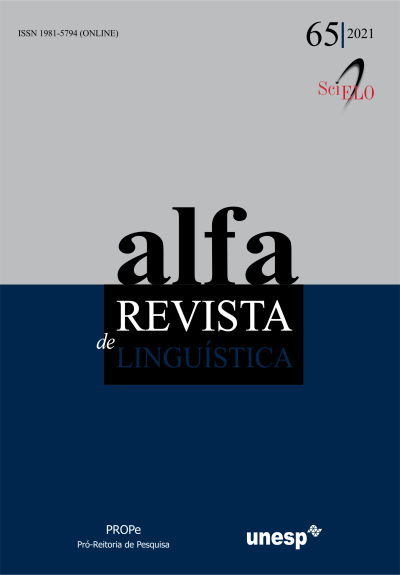To see as a marker of contextual salience in romance languages
evidence from Acadian French and Brazilian Portuguese
DOI:
https://doi.org/10.1590/1981-5794-e13711Keywords:
pragmatic marker, perception verbs, romance languages, grammaticalization, semantic bleachingAbstract
This paper discusses constructions found in Brazilian Portuguese (BP) and Acadian French (AF), in which the equivalents of to see accompanies a second verb in imperative utterances. In these constructions in BP and AF to see emphasizes the command expressed by the other verb. The BP construction can also have an additional interpretation, in which vê ‘seeimperative,2,singular’ has the meaning ‘to verify’. It is proposed that BP constructions can be associated to two different structures. The constructions with the ‘to verify’ meaning are treated as biclausal structures in which the verb ver ‘to see’ selects for a CP headed by the complementizer se ‘if’. As for the analysis of the emphatic order meaning associated to the BP and AF constructions, we adopt the proposals put forth in Speas & Tenny (2003) and Hill (2007, 2014) according to which conversational pragmatics is encoded in syntax as a predicative structure (Speech Act Projection - SAP) above CP. Following these ideas, we analyze BP and AF emphatic order constructions as monoclausal structures, where vê in BP and voir in AF are injunctive pragmatic markers that are externally merged into the SA head in order to encode a pragmatic relation.
Downloads
Downloads
Published
How to Cite
Issue
Section
License
Manuscripts accepted for publication and published are property of Alfa: Revista de Linguística. It is forbidden the full or partial submission of the manuscript to any other journal. Authors are solely responsible for the article's content. Translation into another language without written permission from the Editor advised by the Editorial Board is prohibited.

